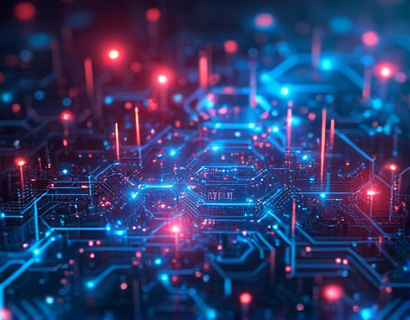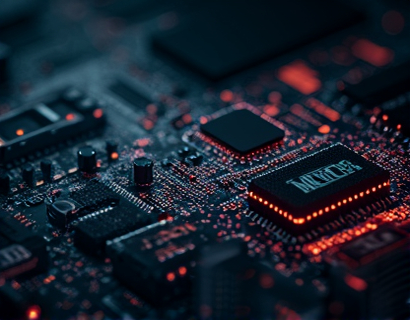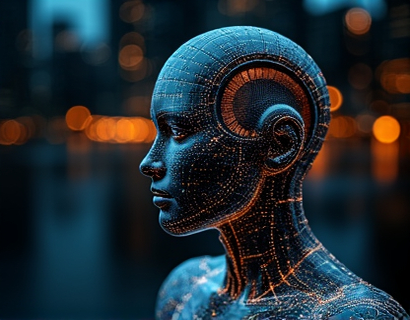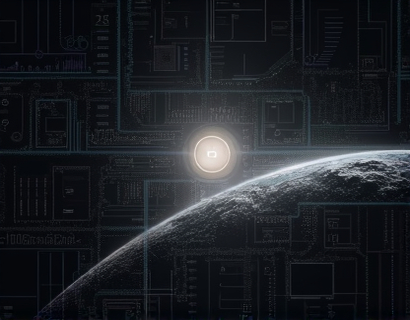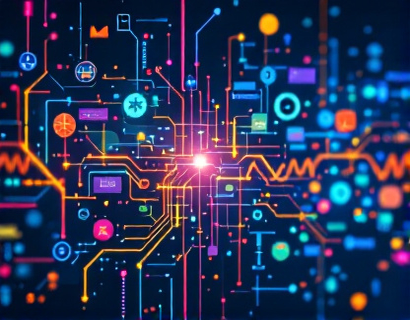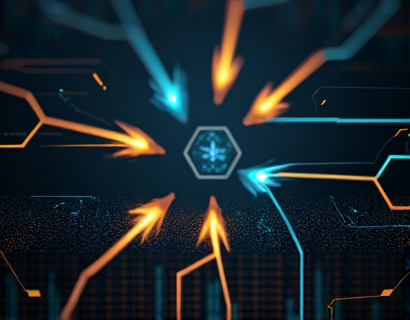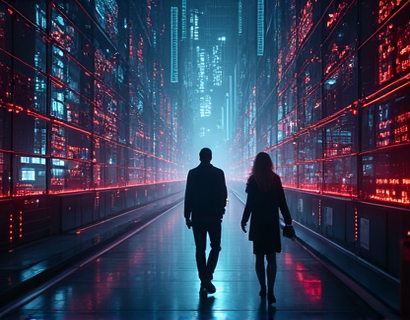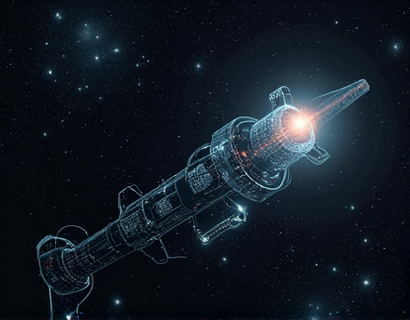Decentralized Productivity: Harnessing AI and Crypto for Next-Gen Ucosystem Solutions
The intersection of cryptocurrency, artificial intelligence, and decentralized technology is giving rise to a new era of digital productivity. This transformative convergence is redefining how we approach tasks, collaborate, and manage our digital lives. By merging these cutting-edge technologies, we can unlock unprecedented levels of efficiency, security, and innovation. This article delves into the potential of decentralized productivity solutions, exploring how AI and crypto are reshaping the digital landscape.
The traditional centralized models of productivity are being challenged by decentralized alternatives that leverage blockchain technology. Blockchain's inherent properties, such as transparency, immutability, and decentralization, offer a robust foundation for building trust and enhancing security in digital interactions. When combined with AI, these platforms can automate complex tasks, provide intelligent insights, and optimize workflows, leading to a more streamlined and effective digital experience.
Understanding Decentralized Productivity
Decentralized productivity refers to the use of decentralized technologies to enhance and manage various aspects of digital work and collaboration. Unlike traditional centralized systems where data and control are held by a single entity, decentralized systems distribute these elements across a network of nodes. This distribution not only reduces the risk of single points of failure but also empowers users by giving them greater control over their data and digital assets.
One of the key benefits of decentralized productivity is the enhancement of data security. By storing data across a network rather than in a central server, the risk of data breaches and unauthorized access is significantly reduced. Additionally, the use of cryptographic techniques ensures that data remains confidential and tamper-proof. This level of security is crucial in today's digital landscape, where data breaches and cyber threats are increasingly common.
AI in Decentralized Productivity
Artificial intelligence plays a pivotal role in elevating decentralized productivity solutions. AI algorithms can analyze vast amounts of data, identify patterns, and provide actionable insights that would be impossible for humans to discern manually. In a decentralized context, AI can be deployed to automate routine tasks, optimize resource allocation, and enhance user experiences.
For instance, AI-powered chatbots can facilitate seamless communication between users and decentralized applications (dApps), providing instant support and guidance. These chatbots can understand natural language queries, handle complex requests, and even predict user needs based on historical data. This not only improves efficiency but also enhances the overall user experience by making interactions more intuitive and personalized.
Crypto-Powered Decentralized Applications
Decentralized applications, or dApps, are at the forefront of the decentralized productivity movement. These applications run on blockchain networks and leverage smart contracts to automate and enforce agreements without the need for intermediaries. The integration of AI into dApps further amplifies their capabilities, enabling them to adapt to user behavior, optimize performance, and provide predictive analytics.
One of the most significant advantages of dApps is their ability to operate independently of central authorities. This decentralization ensures that no single entity can manipulate or censor the application, fostering a more democratic and transparent digital environment. Users can interact with dApps using cryptocurrencies, which serve as both a medium of exchange and a means of incentivizing participation and contribution.
Enhanced Collaboration and Task Management
Decentralized productivity tools are revolutionizing the way teams collaborate and manage tasks. Traditional project management platforms are often centralized, leading to issues such as data silos, limited transparency, and dependency on a single provider. Decentralized alternatives address these challenges by providing a transparent, secure, and user-controlled environment.
For example, decentralized task management platforms can use blockchain to create immutable task histories, ensuring that all actions and changes are recorded and verifiable. AI can be integrated to prioritize tasks based on urgency, importance, and user preferences, providing a more intelligent and adaptive task management experience. Additionally, these platforms can facilitate seamless collaboration by allowing team members to contribute and access information in real-time, without the need for centralized approval.
Smart Contracts for Automated Workflows
Smart contracts are self-executing contracts with the terms of the agreement directly written into code. In the context of decentralized productivity, smart contracts can automate a wide range of workflows, from payment processing to project milestones. This automation reduces the need for manual intervention, minimizes errors, and ensures that agreements are enforced consistently and transparently.
Consider a scenario where a decentralized freelance platform uses smart contracts to manage payments and project deliveries. When a freelancer completes a task, the smart contract automatically verifies the work and releases the payment to the freelancer. This not only speeds up the payment process but also eliminates the risk of disputes and delays. AI can further enhance this process by analyzing project data to predict completion times, optimize resource allocation, and provide insights for improving workflow efficiency.
User-Centric Design and Accessibility
The success of decentralized productivity solutions hinges on their user-centric design and accessibility. To truly harness the power of AI and crypto, these solutions must be intuitive, user-friendly, and accessible to a broad audience. This includes providing robust onboarding processes, clear documentation, and responsive customer support.
Moreover, the integration of AI can help bridge the knowledge gap by offering guided tutorials, context-aware assistance, and personalized recommendations. For instance, an AI-driven interface can adapt to a user's skill level and preferences, providing tailored suggestions and shortcuts to enhance productivity. This adaptive approach ensures that users of all technical backgrounds can benefit from decentralized productivity tools.
Privacy and Data Ownership
Privacy and data ownership are critical concerns in the digital age, and decentralized productivity solutions address these issues head-on. By leveraging blockchain and cryptographic techniques, these platforms ensure that user data remains under the control of the user. Users can choose what data to share, with whom, and for what purpose, providing a level of privacy and autonomy that is often lacking in centralized systems.
AI can complement this by implementing advanced privacy-preserving techniques such as differential privacy and homomorphic encryption. These methods allow for data analysis and insights without compromising individual privacy. For example, AI can aggregate and analyze user data to identify trends and optimize platform performance while ensuring that individual contributions remain anonymous and secure.
Future Prospects and Challenges
The future of decentralized productivity is promising, with numerous potential applications and innovations on the horizon. As AI and crypto technologies continue to mature, we can expect to see more sophisticated and integrated solutions that further enhance productivity and collaboration.
One area of focus is the development of cross-platform interoperability, allowing users to seamlessly transition between different decentralized applications and ecosystems. This would create a more cohesive and user-friendly digital environment, fostering greater adoption and innovation.
However, the path to widespread adoption is not without challenges. Scalability remains a significant issue for blockchain networks, as they struggle to handle high volumes of transactions efficiently. Solutions such as layer 2 protocols and sharding are being explored to address these scalability concerns. Additionally, regulatory frameworks need to evolve to support the growth of decentralized technologies while ensuring user protection and market integrity.
Conclusion
The convergence of AI and cryptocurrency is paving the way for a new era of decentralized productivity. By leveraging the strengths of both technologies, we can create more secure, efficient, and user-centric digital solutions. As these innovations continue to evolve, they have the potential to transform not only how we work but also how we interact with technology in our daily lives. Embracing decentralized productivity is not just a technological shift but a fundamental reimagining of the digital landscape.




